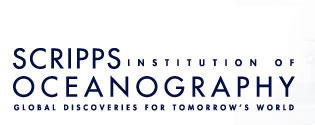|
||
About CompasIntroductionThe mean state and variability of the coupled ocean-atmosphere-land system is a matter of crucial scientific and societal importance and is one of SIO's strategic research directions. Changes in rain and snowfall patterns can cause persistent droughts or flooding, with attendant effects on agriculture and hydroelectric power supplies. Precipitation-driven changes in hydrology influence the susceptibility of arid regions to destructive wildfires, or of hilly areas to mudslides. The ocean directly influences the long-term climate by influencing the transport of heat and moisture and by exchange and uptake of gasses such as C02. Oceanic vertical mixing and upwelling play an important role in fisheries by determining the vertical flux of nutrients. Near-shore water quality and ecosystem health concerns have driven a heightened interest in the processes that move and mix water and constituents. The Center for Observations, Modeling, and Prediction at Scripps (COMPAS) was formed to address a common core of these questions through numerical modeling of physical processes in the ocean, atmosphere and on land. COMPAS is a cooperative center established by researchers in the Scripps Institution of Oceanography (SIO) Physical Oceanography, Climate, and Integrative Oceanography research divisions. The U.S. oceanographic and climate communities have been limited by computing resources, and the COMPAS cluster computing facility has had a significant positive impact, both locally and globally, through increased local computing capacity and experience, collaborations, education, and, not least, the scientific results. These local resources have enabled local expertise and shared experience in the ``nuts and bolts'' of modern supercomputing. SupportCompas was originally supported by an NSF MRI along with additional support from ONR, IBM (through CalIT2), the SIO administration, and the Vettlesen Foundation. Compas has been further supported by a second NSF MRI. |
||
